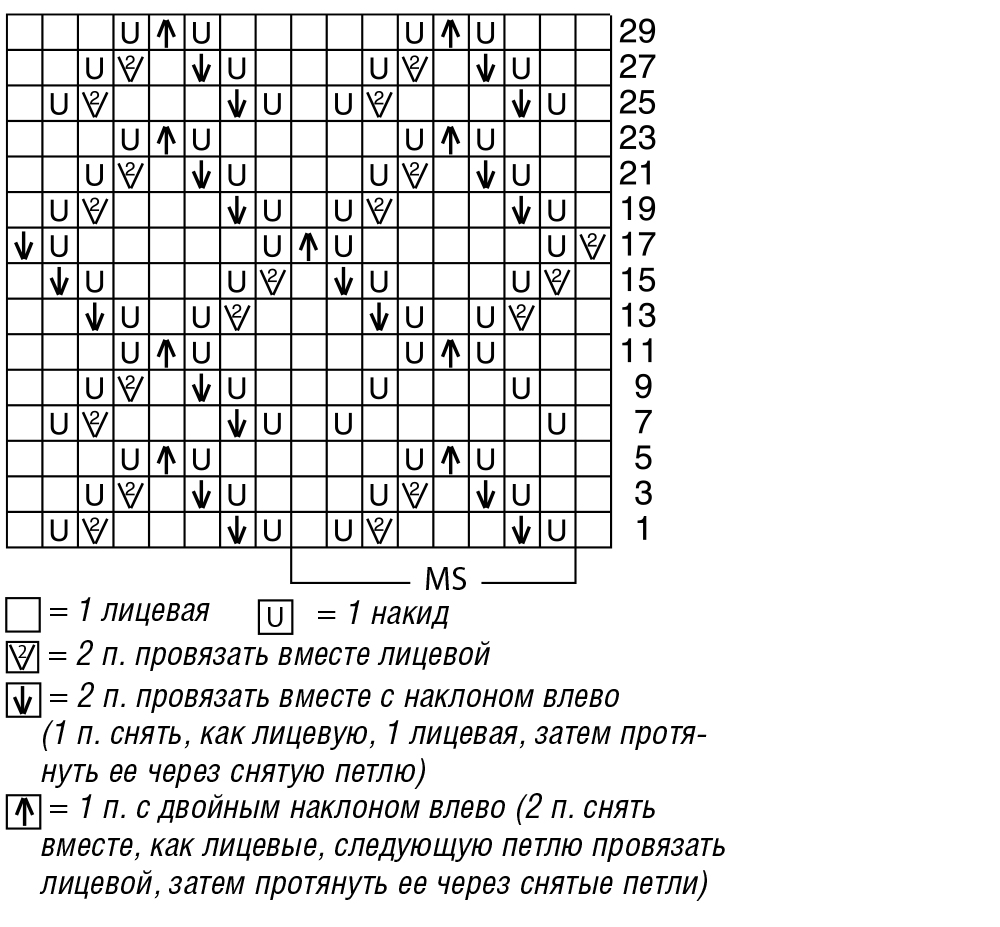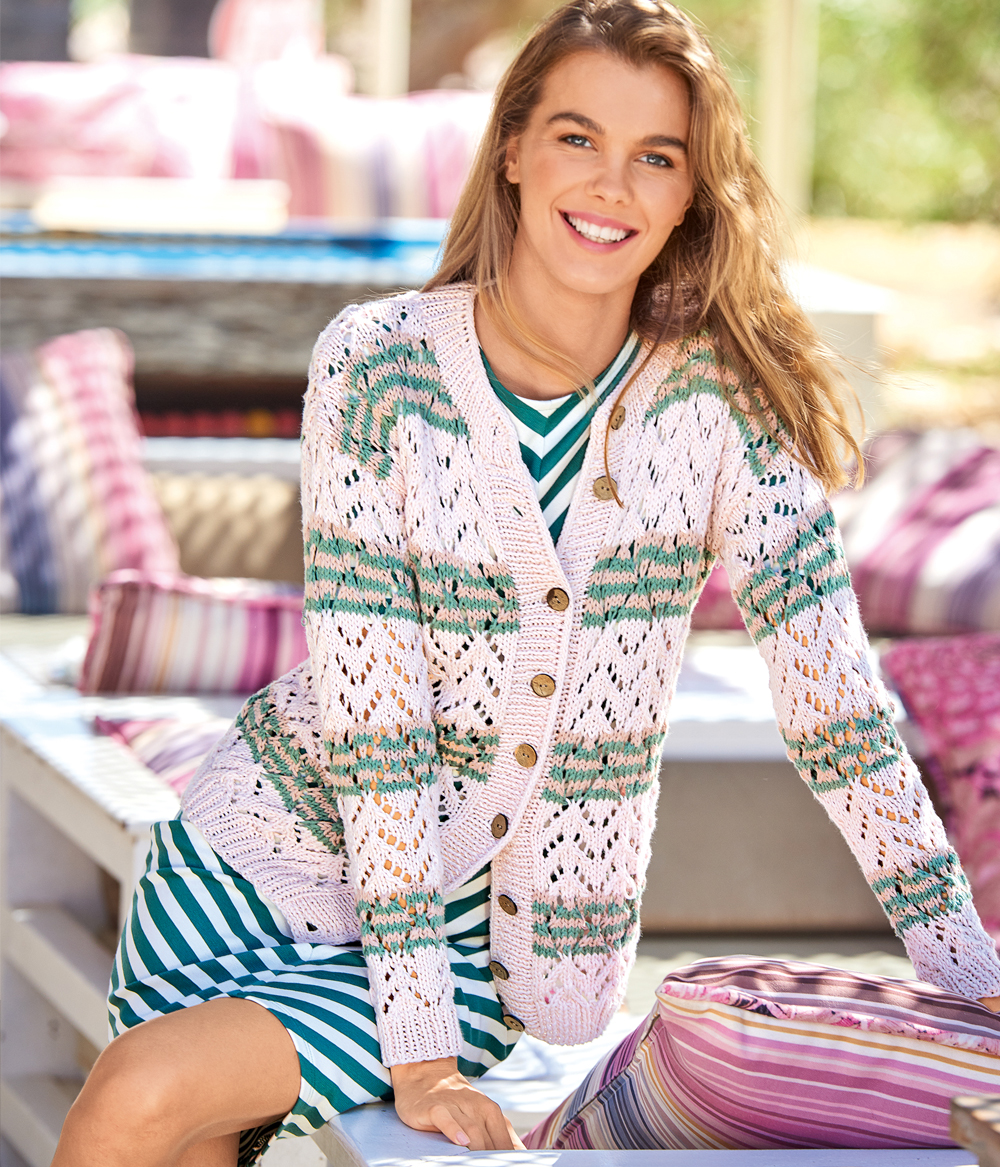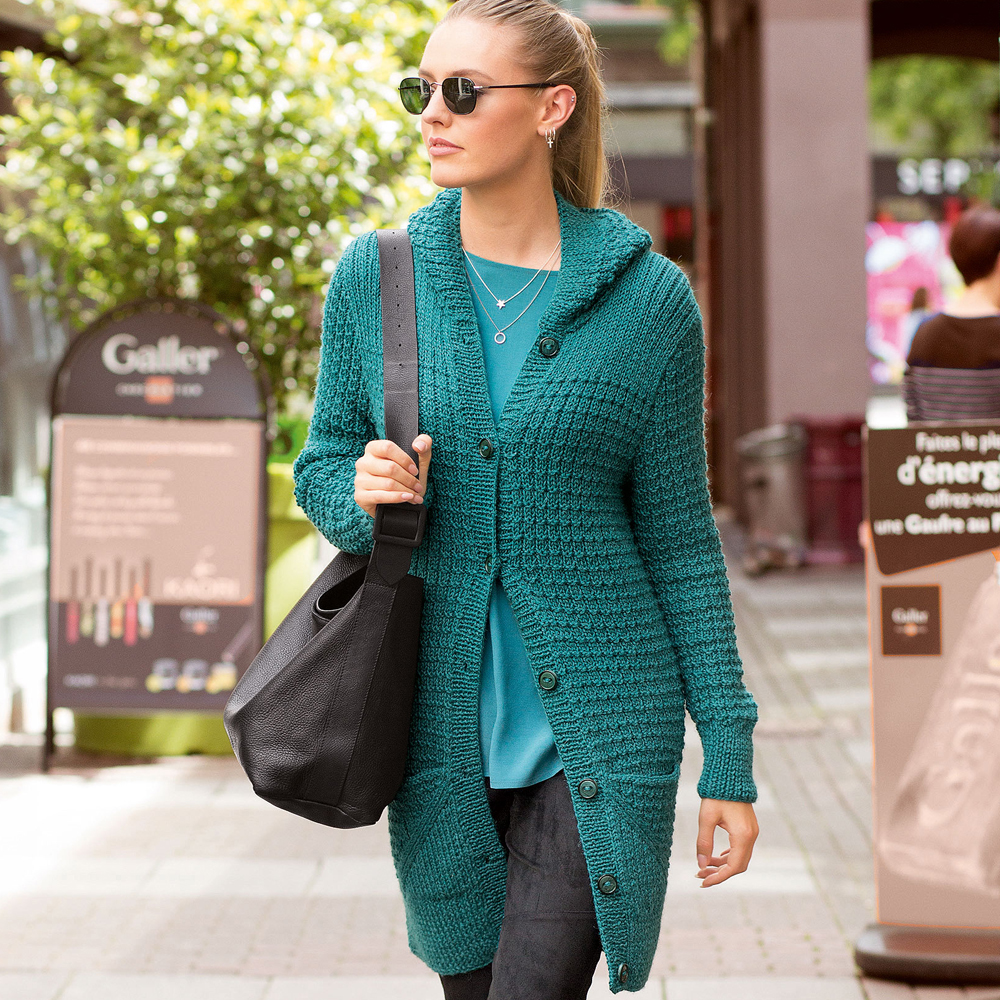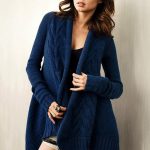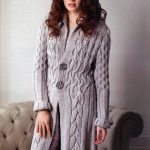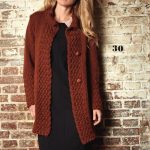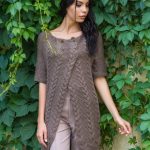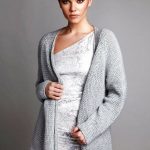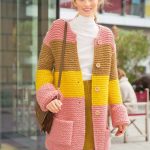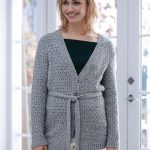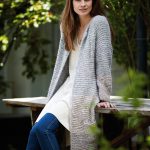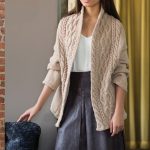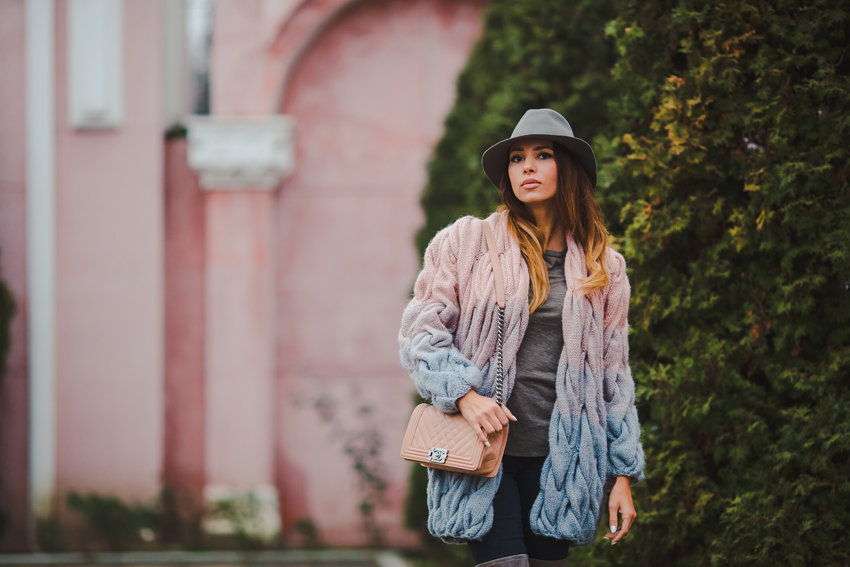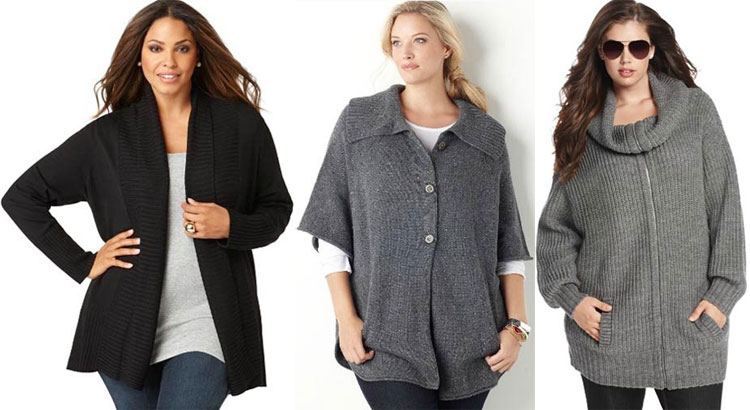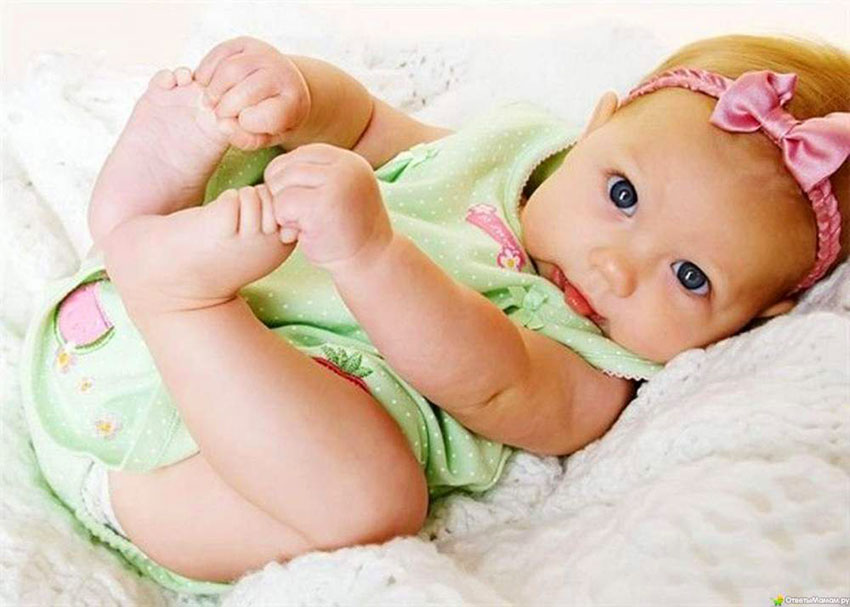Hand-made items are always in demand. They add a twist to your look and emphasize your individuality. You can wear such items at any time of the year. A hand-made cardigan will help you warm up on a cool day or evening; you can knit it with knitting needles from thin or thick yarn. Detailed patterns for various models will make the work accessible even for beginner craftswomen.
Selecting yarn and tools
Practicality, comfort, durability and attractiveness of the cardigan's appearance depend on the correct selection of threads. Several factors are taken into account:
- Style. The cropped cardigans that are fashionable today can be combined with any type of yarn. The same applies to the elongated models. There is one mandatory rule for such items: heavy woolen threads in their pure form cannot be used. To ensure that an elongated oversized cardigan does not lose its shape, especially in the shoulder seams, and does not look too voluminous, it is better to give preference to yarn with the addition of synthetic threads. The same material should be chosen when knitting a cardigan coat.
- Pattern. An openwork cardigan can be knitted from thin threads. It is important to monitor the twist density. The optimal indicator is 400 m per 100 g, in this case the pattern will be neat and clear. A cardigan with voluminous braids made from thick yarn will be especially effective. A pattern made from woolen and acrylic threads looks interesting. The technique of throwing loops also looks advantageous. For beginners, the simplest pattern will be garter stitch. Its advantage is that the product does not twist, does not lose shape, and there are no restrictions on yarn.
When choosing threads for a knitted cardigan, be sure to take into account the season in which the product will be worn. More suitable for winter:
- Wool. A natural material that keeps you warm, stretches well, and is quite durable. It is characterized by high hygroscopic properties, but it forms pellets, requires careful care, can cause allergies, and can prickle.
- Viscose. An artificial thread, but made from natural components. It is usually added to other types of yarn. Viscose is pleasant to the touch, breathable, hygroscopic, does not accumulate static electricity. But there are disadvantages: you need to take care of it carefully, wash it by hand, do not wring it out, otherwise the finished product will become shapeless.
- Velour yarn. Clothes made from it are warm, cozy, soft, the products do not wrinkle, and retain their "marketable" appearance for a long time. The yarn breathes well, is quite durable, does not cause irritation, and comes in a variety of colors. However, it must be taken care of carefully, it cannot be machine washed, twisted, or ironed. Choose gentle detergents for washing.
Summer cardigans are knitted with knitting needles from yarn such as:
- Silk. Natural material perfectly retains heat, is durable, and lends itself well to dyeing. Items made from it will always retain their shape and will not become covered with pellets. However, the threads are very delicate, the product requires careful care, it is necessary to avoid direct sunlight, excessive moisture, high temperatures, and use gentle detergents.
- Bamboo. Natural thread with a porous structure. Absorbs and removes moisture well, keeps warm in cold weather, and cools in summer. Contains antibacterial substances, does not cause allergies. But after washing it can stretch, form pellets, tightening, the finished product does not retain its shape well, the pattern is often distorted.
- Flax. A very durable type of yarn of natural origin, has antibacterial properties, does not shrink after washing, maintains a constant comfortable body temperature, dries quickly. But the products will wrinkle easily, they look rough and more massive. Flax does not have an abundance of colors.
- Cotton. Vegetable yarn, warms well, durable, breathable, hypoallergenic, absorbs moisture, pleasant to the touch, does not fade. But cotton items will take a long time to dry and can shrink significantly.
Fantasy and sectional yarn, like velour, are new on the market. Products made from them are original and bright. Fantasy yarn looks like a single-layer or double-layer ribbon wound into a ball. It is dyed in one tone or with transitions into different shades. An interesting type of fantasy yarn is pompom thread, on which balls (thickened convex elements) are located in a certain sequence. Sectional yarn is distinguished by a special coloring, the colors of one thread alternate in a special order, forming smooth transitions.
A women's cardigan is knitted with straight and circular knitting needles. You may also need additional knitting needles, knitting pins, and a crochet hook. To determine the size, you can read the label or take your own measurements by placing a folded thread on a ruler. The resulting number is the knitting needle number.
The tool should be selected taking into account the knitting technique. For free knitting, making openwork patterns, thick knitting needles are needed, thin ones, on the contrary, make it possible to create a dense pattern, the fabric will be tight and pulled together.
A simple method for calculating the amount of yarn required.
- Knit a square sample according to the pattern. Test-process: wash, dry, iron.
- Weigh the sample after testing and find out its area.
- Apply the formula for calculation. The weight of the yarn for the product is determined as follows: the area of the pattern is multiplied by the weight of the sample and divided by its area.
All that remains is to purchase the required number of skeins of the selected yarn, based on their weight indicated on the packaging.
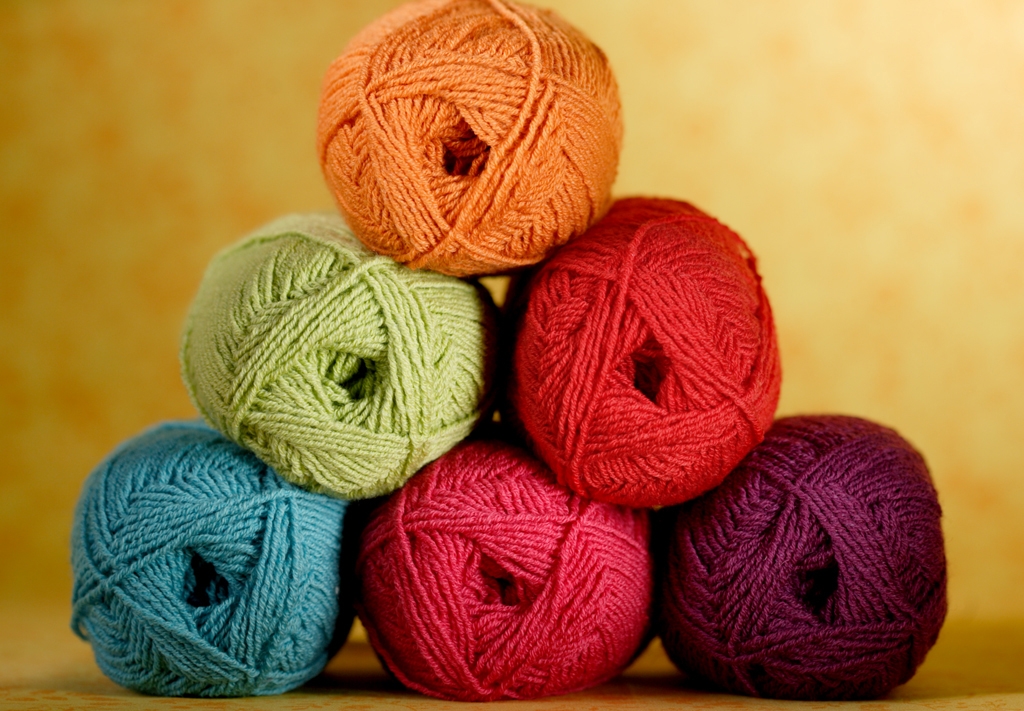
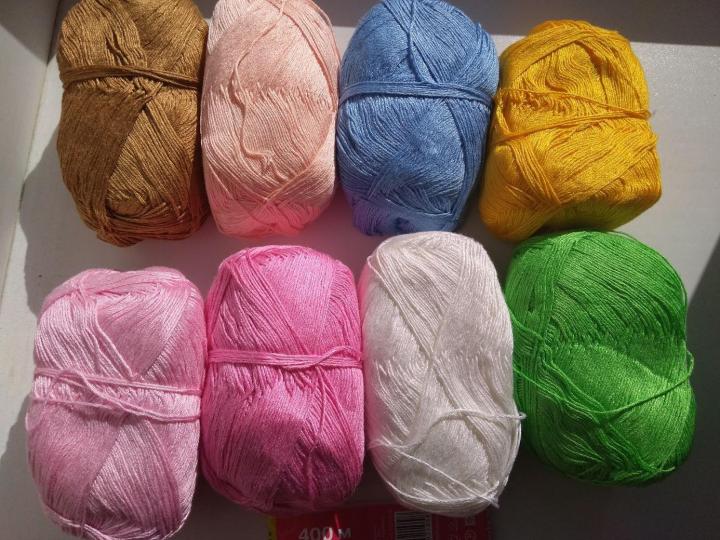
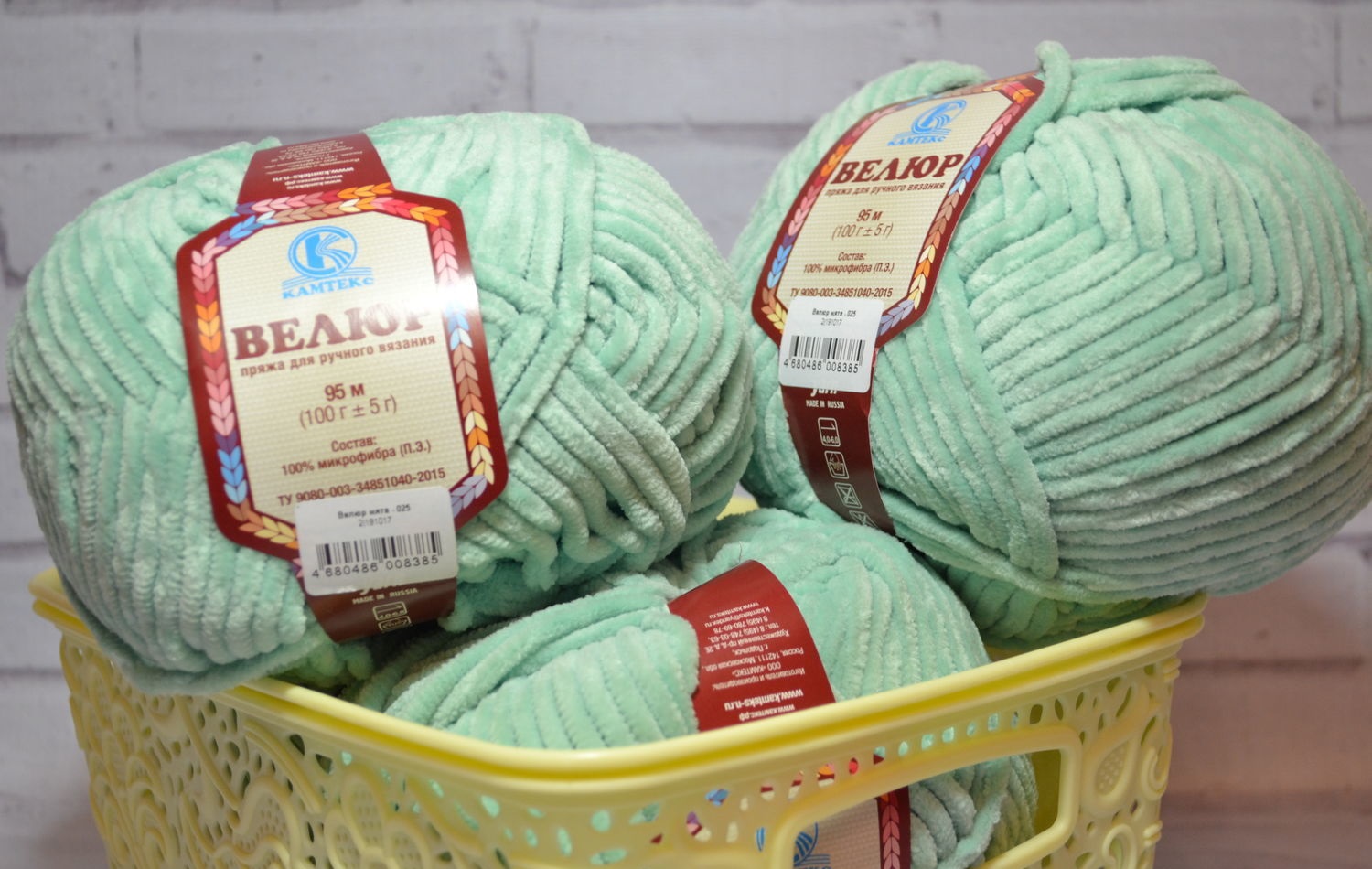
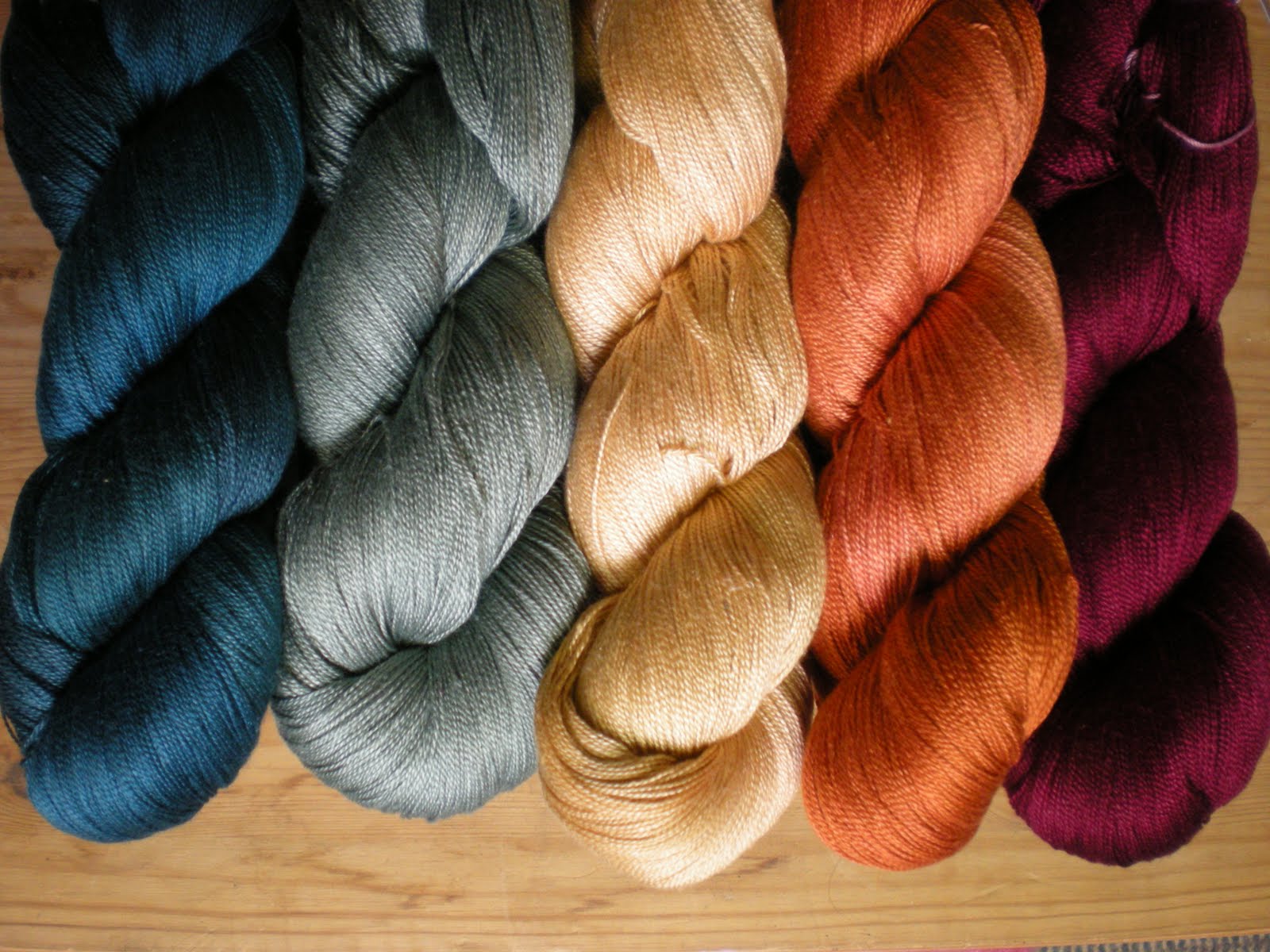
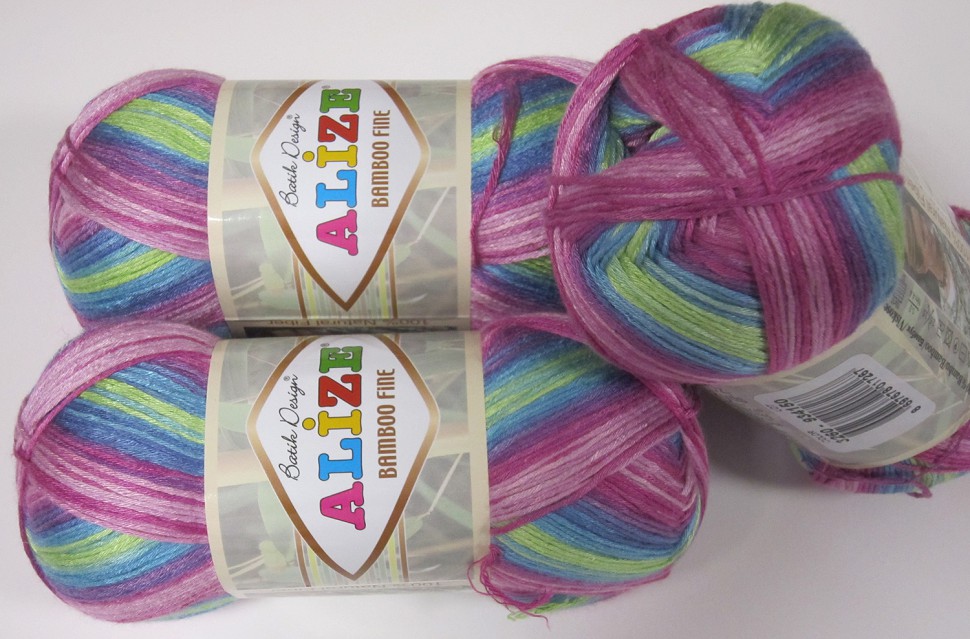
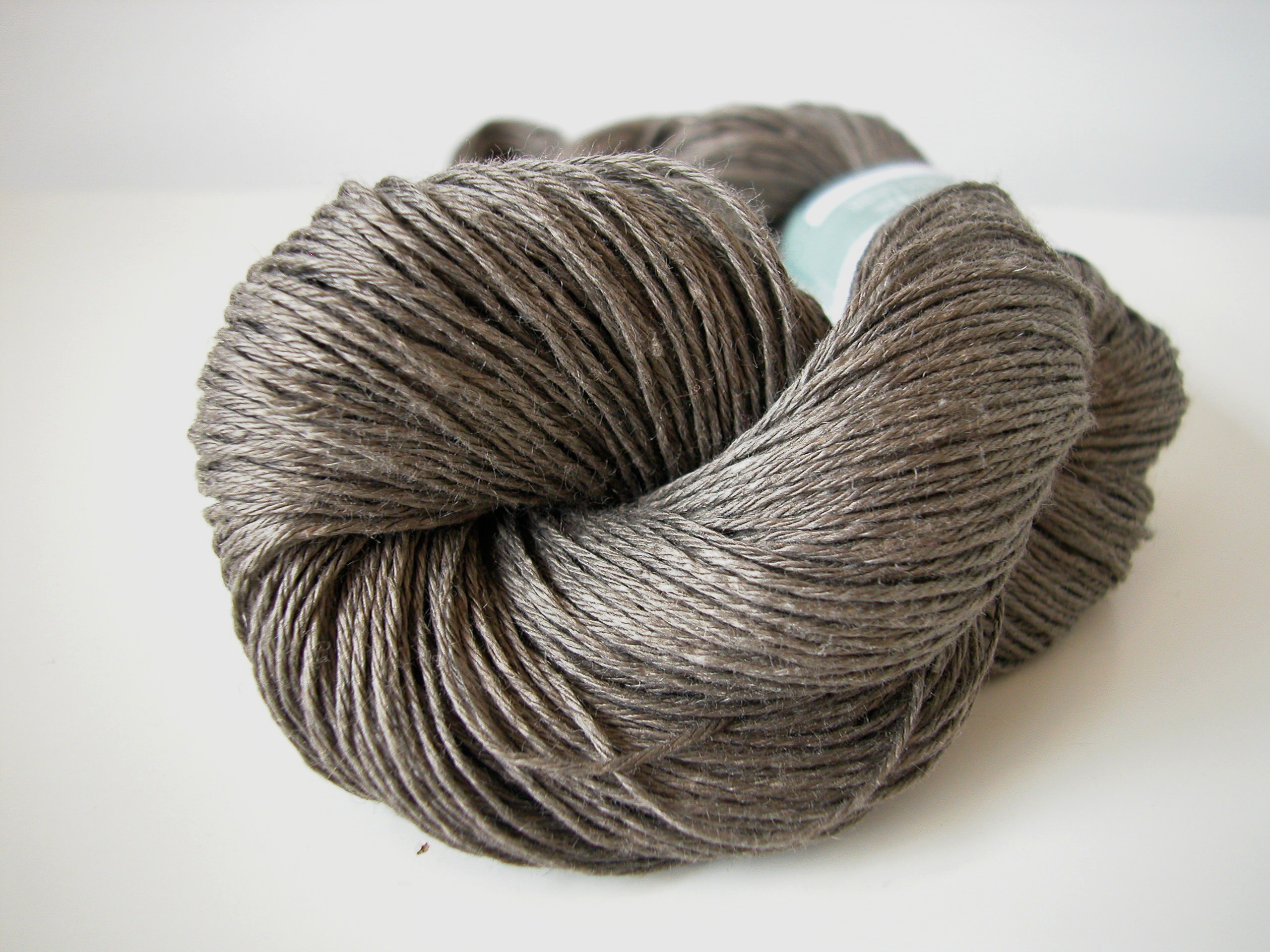
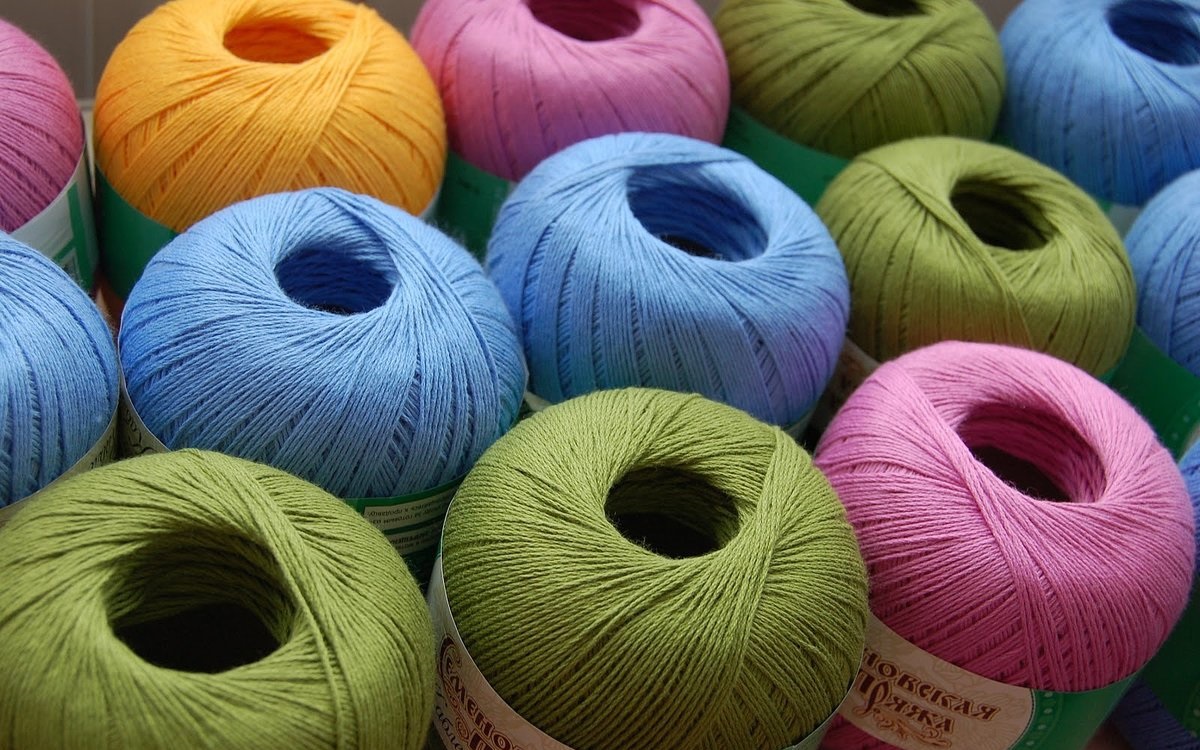
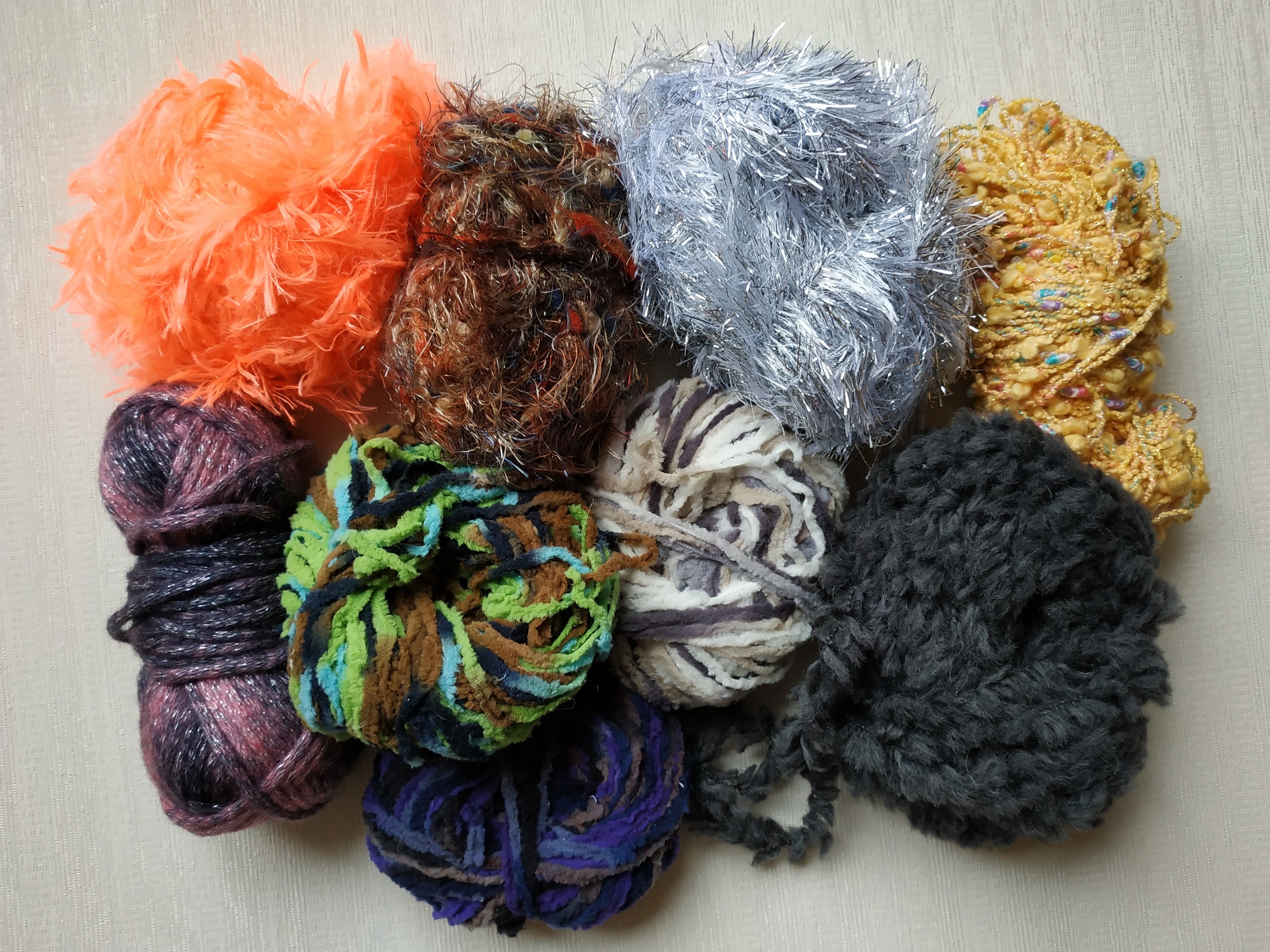
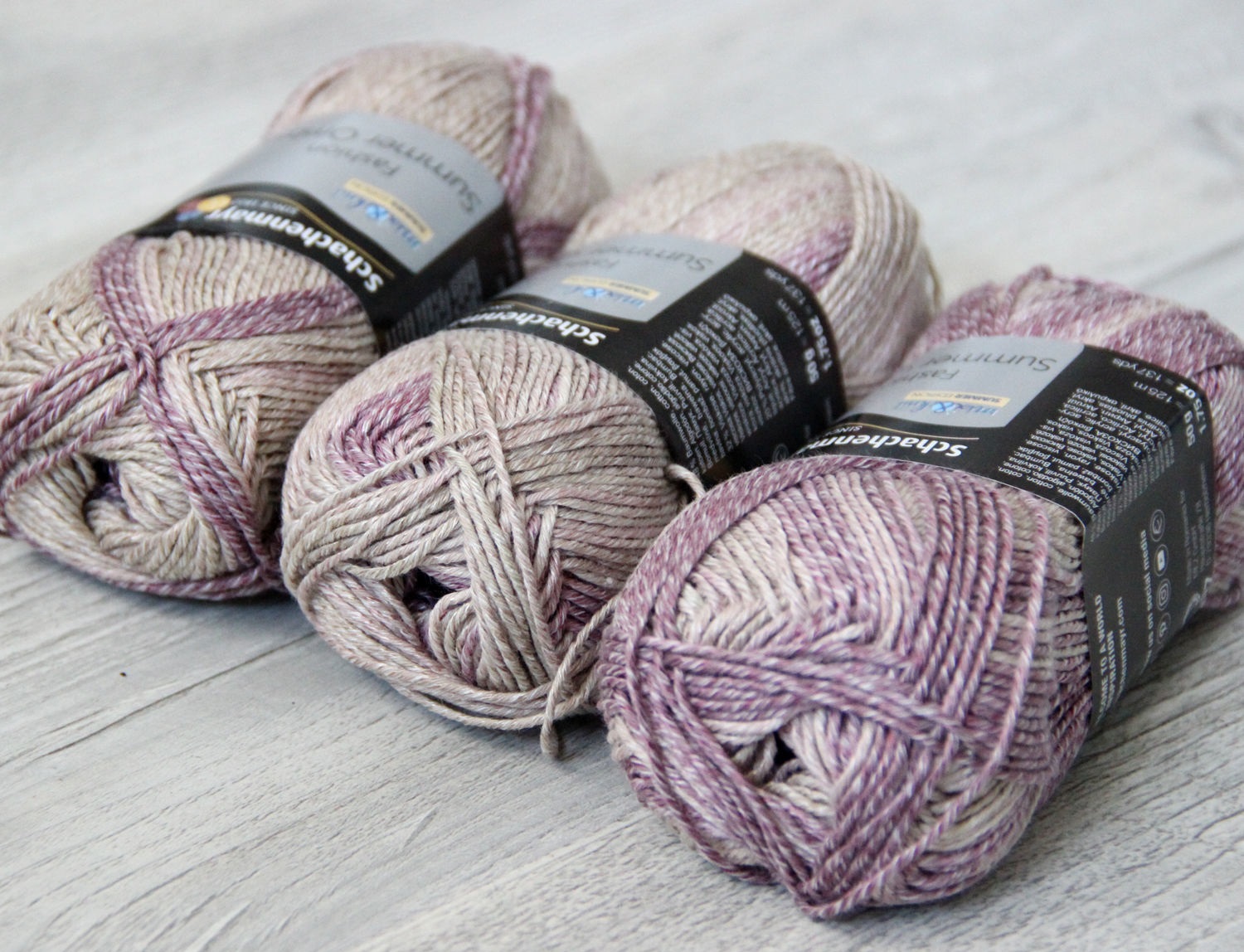
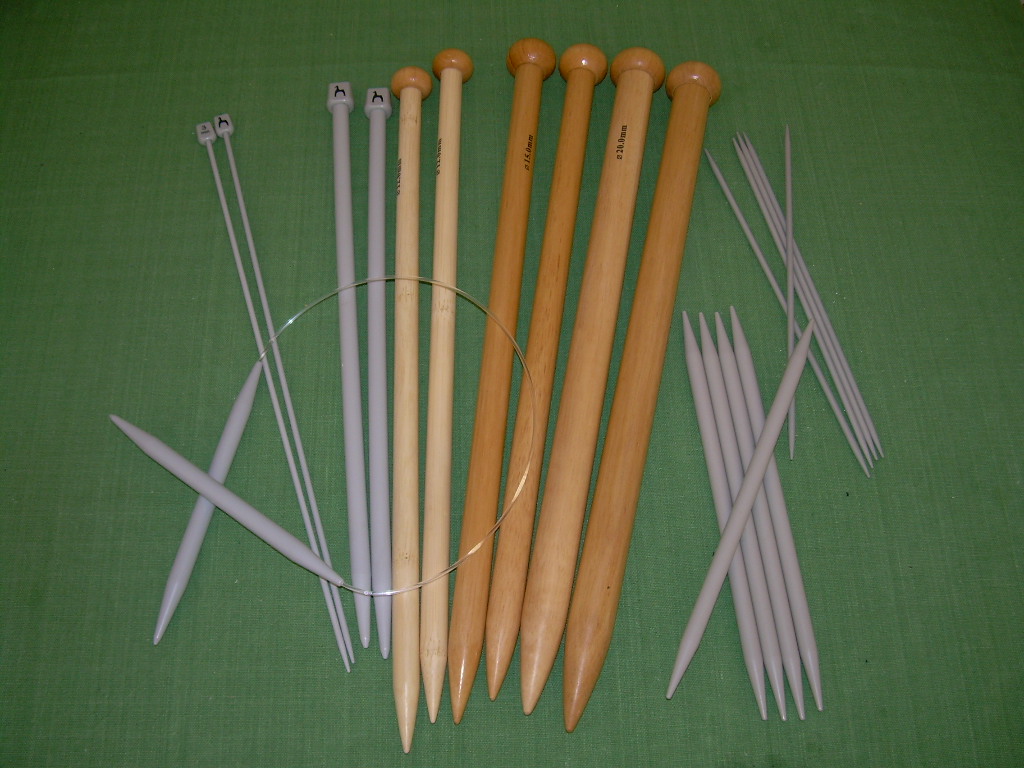
Techniques and patterns
Cardigans are created with knitting needles using many types and techniques of knitting. The most successful of them are:
- Garter stitch and stockinette stitch are examples of the simplest patterns available to beginners. This type of knitting is most suitable for overweight women - the resulting item will hide extra pounds. But large relief patterns, on the contrary, add unnecessary volume to the figure. The edges of the product will not tuck in, the cardigan will not deform. The same fabric is obtained on both sides. The knitting should be quite dense.
- Elastic band - is presented in several types. Cardigan models are a little voluminous, look original, stretch well. You need to knit loosely, the pattern will be double-sided, so you will need a lot of yarn for it. To avoid skewing, it is recommended to knit the outer loops through the back wall, and the inner ones - through the front.
- Openwork patterns are an ideal choice for airy, summer cardigans. This type of knitting is also presented in many variations. Combinations of stocking stitch or garter stitch with yarns are used. Japanese openwork looks interesting. Knitting a cardigan with knitting needles should be done in a free technique. Any colors are chosen, gentle pastel colors are well suited, bright models look stylish and youthful.
- Braids - this knitted pattern looks very impressive. Depending on the thickness of the threads, the same option can look different. You can knit a cardigan with braids using additional knitting needles. Volumetric figured elements can be made in a color different from the background pattern.
- Pearl knitting or "rice" is an example of a simple, accessible even for beginners double-sided pattern. If you want to create a simple cardigan with knitting needles, but so that it attracts attention, it is better to choose this pattern. You need to knit tightly. The pattern can be used as a background for the execution of complex figures. The coloring is chosen to your taste.
- Patchwork - the fabric looks like a patchwork quilt. An asymmetrical cardigan knitted from yarn of different colors looks very interesting in this technique. The finished squares are not sewn together, but connected into one fabric during knitting. The technique is very easy to perform, suitable even for beginners. Important point: knitting always goes in one direction (from left to right).
- Enterlak is the best option for using multi-color knitting. The product looks woven, one tone comes out from under another. Cardigans are knitted with knitting needles in one piece. Stripes looking in different directions can be made narrow or wide. The front surface is used, but the pattern for creating the product is quite complex. A cardigan made in this technique is very fashionable today.
- Rotary knitting is also known as sectional or partial. The following techniques are used: swing, oblique and radial knitting. In this way, it is easy to make not only a two-color cardigan - experienced craftsmen even create entire paintings. The knitting technique is quite complex, not for beginners. In a nutshell, its essence can be conveyed as follows: loops in a row are knitted in separate sections, while either their increase or decrease occurs. Shortened or elongated rows are obtained, respectively.
The gradient technique is very interesting, it allows you to create a unique pattern for a cardigan. Using different patterns, you get color transitions of varying intensity.
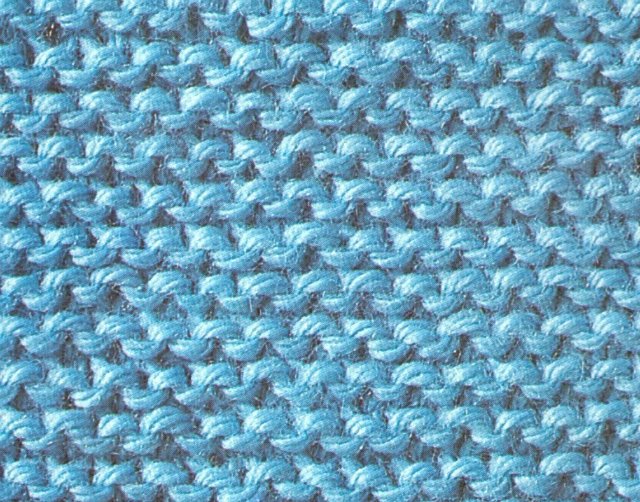
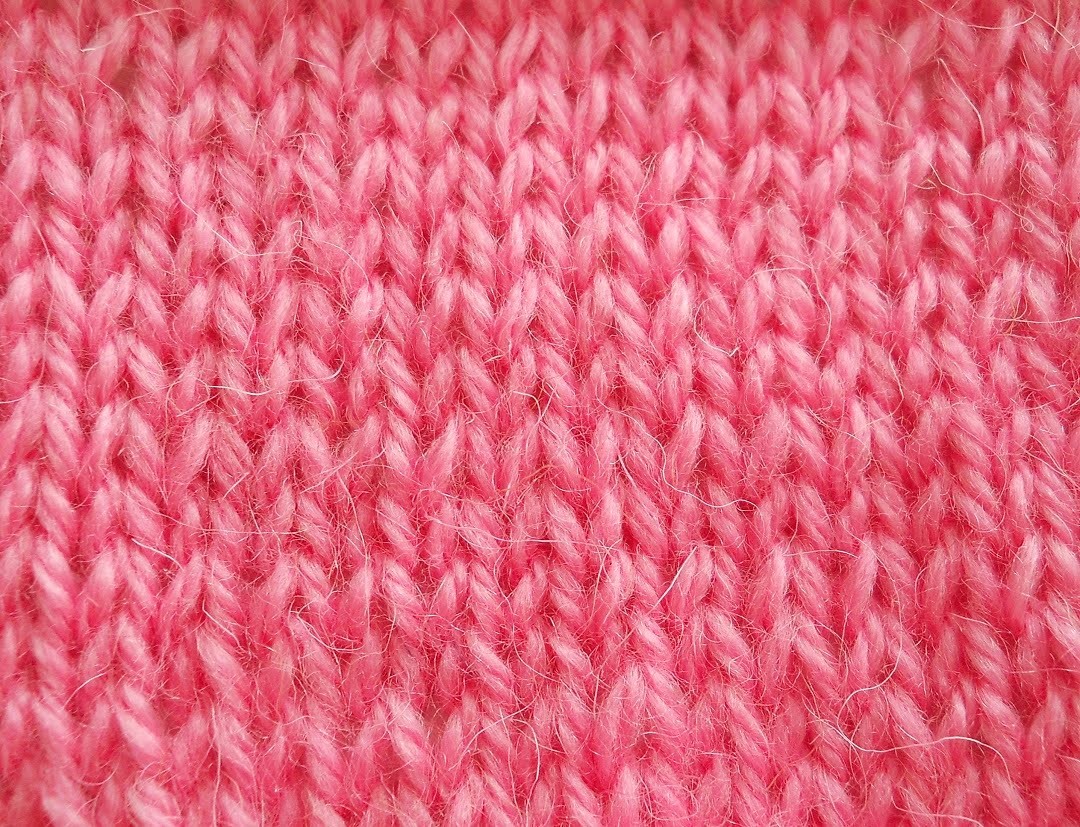


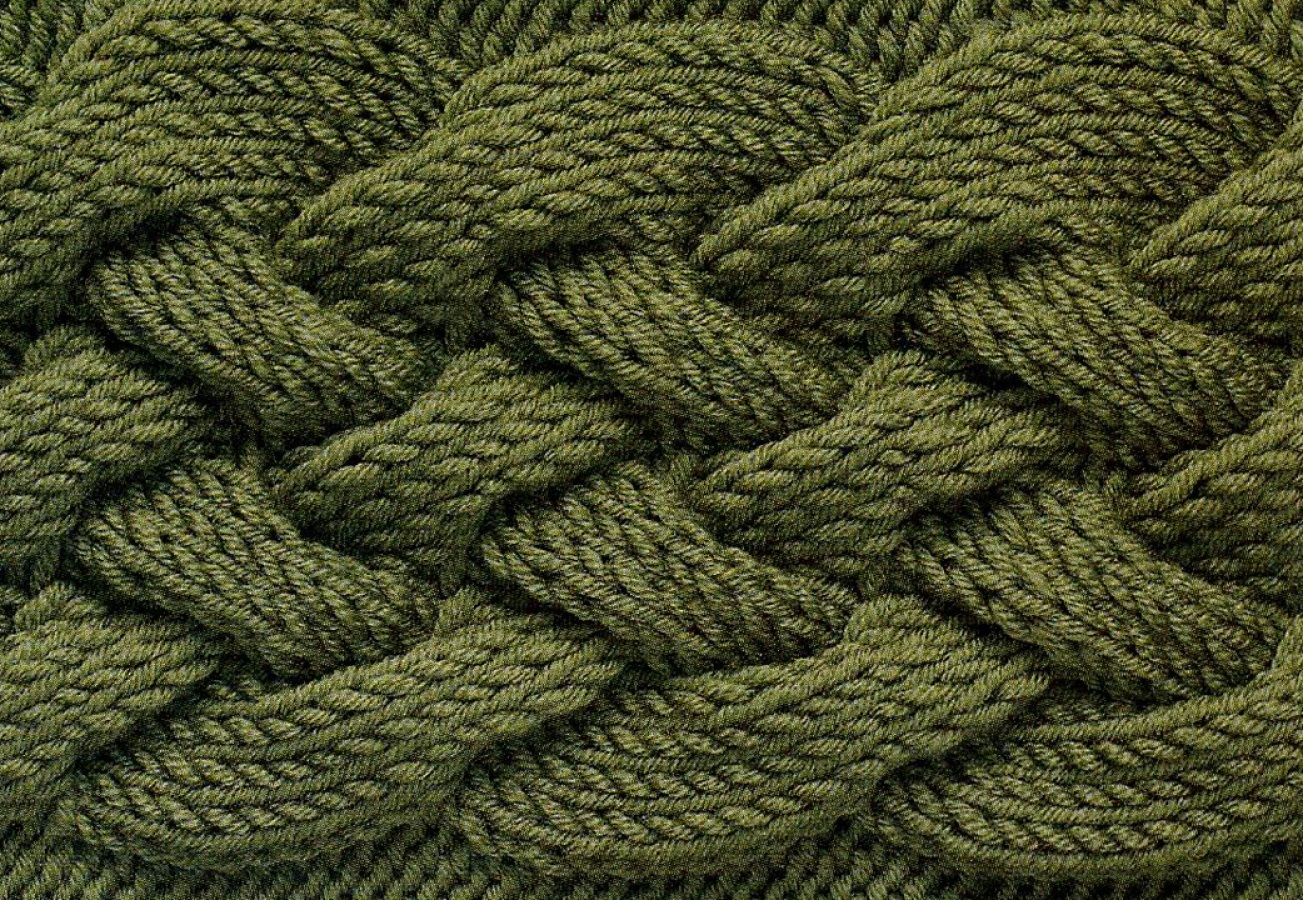
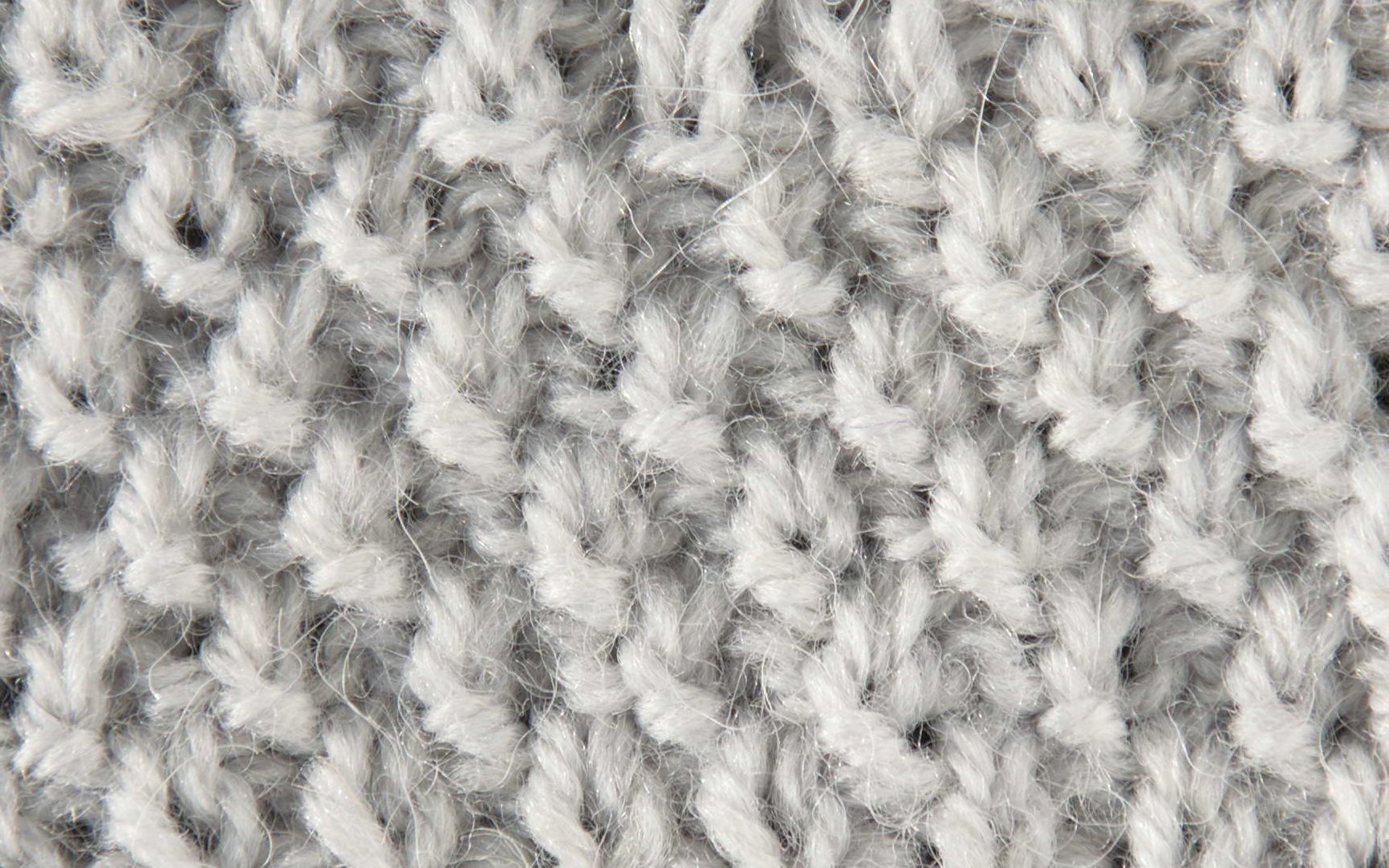

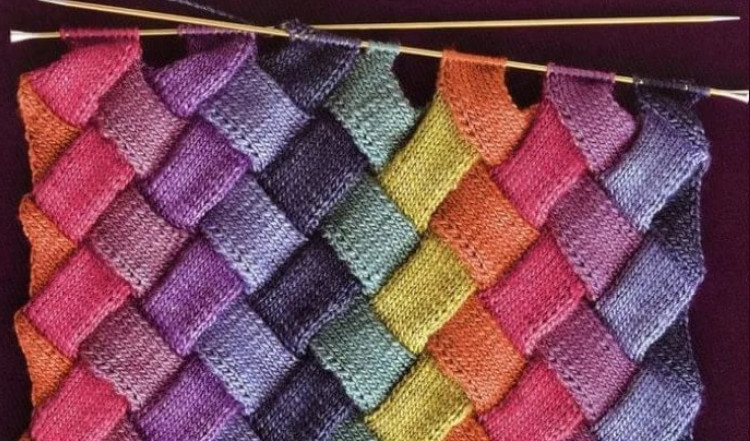

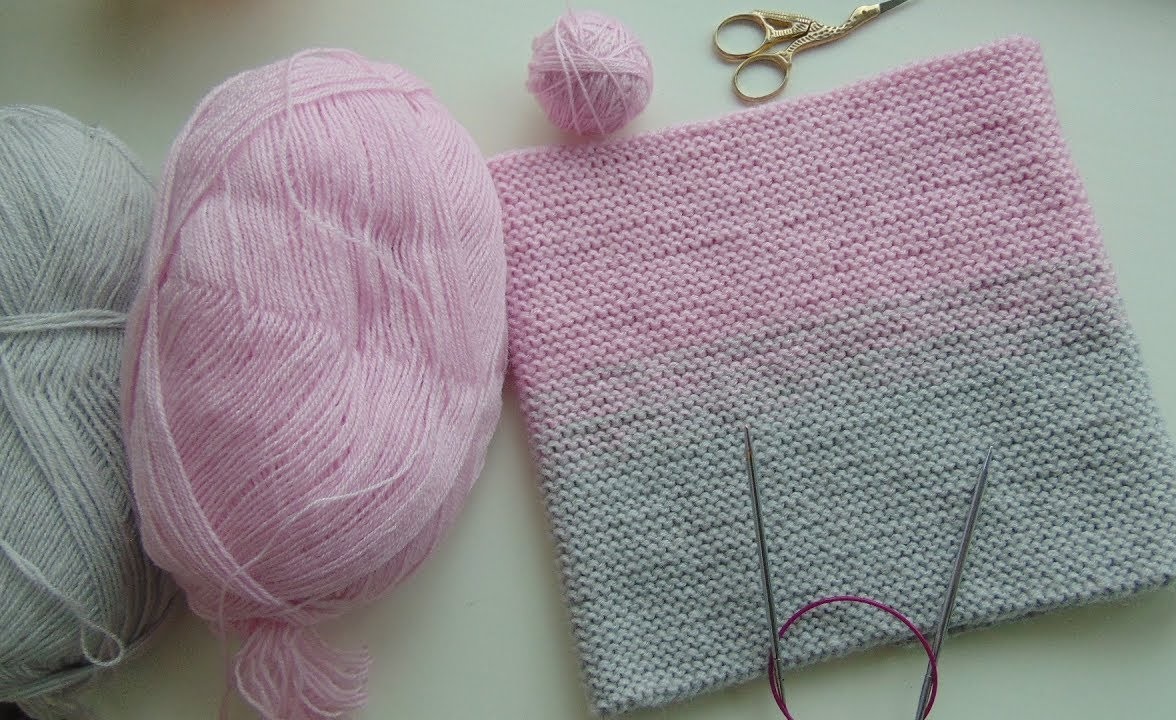
Measurements and preparation
Before you start knitting, be sure to take measurements:
- chest, hips, waist;
- torso height.
The resulting numbers will help you navigate the size chart. All model descriptions come with diagrams. The sizes indicated in them are easy to adapt to your own parameters. The finished pattern can be enlarged or reduced in a very simple way. To do this, horizontal and vertical lines are drawn along the width and length of the image. Then, cuts are made along the marked lines. The resulting parts are either moved apart or shifted toward the center, achieving the desired values.
The preparatory stage will allow you to determine the knitting density. Make a sample with the selected pattern 10 × 10 cm. Beginners will be able to practice the pattern of the future product. The finished sample must be washed, dried and ironed, as indicated in the instructions for the yarn. If the fabric has stretched a lot, it is recommended to choose a smaller knitting needle size. If it has shrunk, it is necessary to change the knitting density.
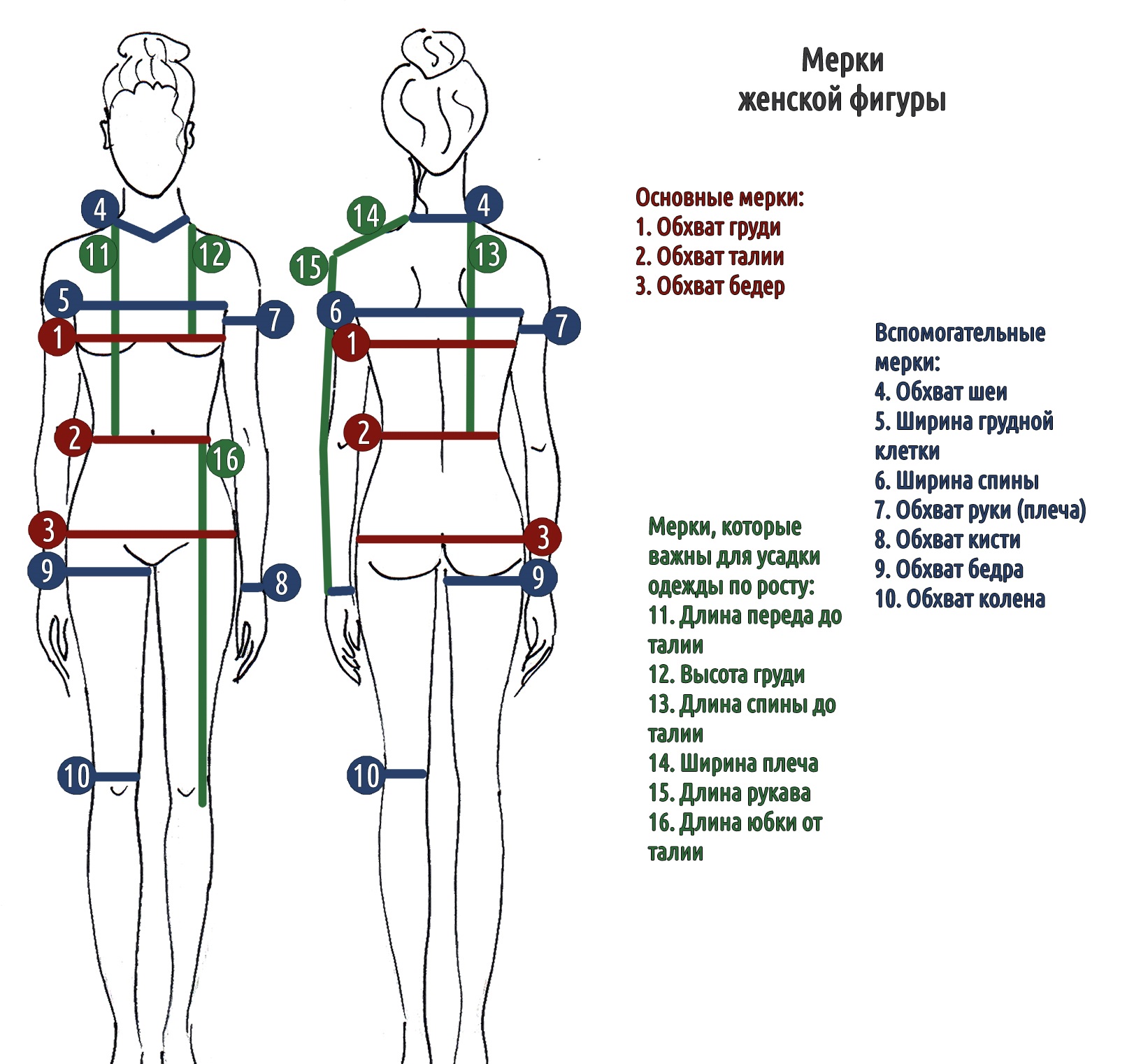
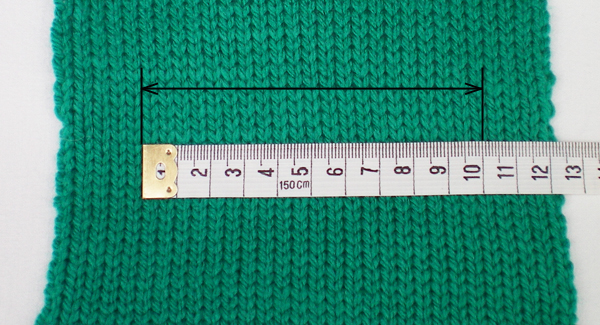
Stages of work
There are many patterns for knitting an elongated sweater, known as a cardigan. Each has its own characteristics. The subtleties of knitting the most popular models are reflected in the proposed master classes.
Openwork cardigan
The combination of an airy pattern and colored stripes gives the product originality. The item can be knitted from cotton in light pink, grey-brown and green tones. You will need 350–450 g of yarn, 100–150 g for each color. Straight and circular knitting needles No. 4, 5 are used for the work. The pattern is designed for sizes 36/38 (40/42), 44/46.
Knit the elastic using a 1 x 1 pattern. Cast on an odd number of loops (L). For an openwork pattern, the number of L should be a multiple of 8 + 3 edge loops. First, draw or use a ready-made cardigan pattern with knitting needles.
To bevel the sleeve, add 1 P in every sixth row until the required width is obtained. On the right bar, starting from the 6th row, make 8 holes for buttons at equal distances. They are made as follows: 1 yarn over, knit 2 P according to the pattern. At the end of the last odd row, add 3 P and do not close the loops.
The edges of the placket and neck are closed using the I-cord technique or a hollow cord, which gives the elements density. To do this, knit the first loop. From the thread between 1 and 2 P, pull out P and knit crossed. Return the 2 P formed on the needles to the left side, knit 1 front, 2 P together front. Repeat to the end of the row.
Warm with hood
A cozy item will perfectly complement a sporty look. To knit a cardigan of size 38/40 (44/46), you will need wool yarn of any color, straight knitting needles No. 5 and 4.5, circular knitting needles No. 4, 5. For the elastic, use a 1 × 1 pattern.
Nuances when working with the left shelf: for size 38, the loops highlighted in gray on the diagram are knitted with the front surface.
To form the neckline, close 9 sts once on each strip, and then 3, 2 and 1 st once in every 2nd row, respectively. On the back and shelves for the shoulder bevels, close 5 sts once, and the same number three times in every 2nd row.
For the hood bevels, add 2 sts four times in every second row and the same amount of 1 st. Then, in every 4th and 6th row, add 1 st seven times. The increase is made on both sides. After 29.5 cm from the start of knitting, close 1 st for rounding, and then in every 4th row, add 1 st seven times. To make the knitted cardigan with a hood look neat, connect all the parts with a knitted seam.
One-piece
The product is obtained without seams due to a special knitting technique, which gives it neatness. In addition, if there is a need to knit a cardigan in three days, this model is the best choice. The garter stitch cardigan is made of mixed yarn: 50% wool and polyacrylic. For a length of 75/76 cm, chest circumference of 92/108 cm, you will need to prepare 800/900 g of thread, knitting needles No. 8 and 9.
For rounding at a height of 40 cm from the cast-on line, add 1 P once on both sides, repeat after 4 rows. Then in every 2 rows, the additions are made according to the following pattern: 1 × 1 P, 2 × 2 P, 2 × 3 P. Then add 44/47 P once. After 63/66 cm from the cast-on edge, mark the middle and then knit the cardigan, that is, its parts, separately.
Nuances of knitting popular models
A cardigan is a multifaceted item. There are many interesting variations:
- Duffle coat. This is a straight cut garment with a hood and large patch pockets. It can be knitted from angora or other wool yarn. The pattern should be as simple as possible, even rough.
- Jacket. The model with raglan sleeves looks very feminine, the color can be soft pink, the pattern is openwork of diamonds. It will turn out to be a good thing for the summer. Ribbon yarn will do. Another option is a warm Asian jacket with leaf trim with a hood without buttons. An excellent choice for autumn weather.
- Lalo cardigan. It is based on a beautiful pattern of braids, and very large ones at that. The main highlight is the smooth transitions of compatible shades. When knitting this type of cardigan, it is recommended to take the yarn "Lanagold 800" of at least three tones. Tool No. 5 will do. Work begins with three threads at once. After several rapports, one of them is removed and the next shade is attached. After a few centimeters, the second thread is changed. After the same number of rows, the first shade is completely changed to the second. It is worth considering that such cardigans are not the best choice for overweight women. The volume created by large braids does not hide the flaws of the figure well, visually increasing it. But on slender girls, the model looks very beautiful.
- Hooded items. They can be short, but a long cardigan looks more original. You can use any yarn, even knitted. The latter option is chosen when knitting summer items.
- An elongated cardigan. It can be of different lengths, sometimes reaching the knees or going down lower. An elegant openwork model in pastel colors with two buttons looks beautiful and feminine. The item can be made without fasteners and serve as a light cape. If knitted from thick warm yarn, such a cardigan will be very cozy and will warm you well in cold weather.
- Short models. They reach the waist or are slightly above this line. An openwork pattern and thin yarn will help create a light summer option. Thick thread and tight knitting will be needed for a winter product. Sleeves can be long, short or three-quarter. Pattern and coloring - for every taste. Products are made with or without fasteners.
- One-piece models. Knitted with any pattern. Work begins with the sleeves, gradually adding loops to achieve the required height of the shelves.
- Wrap cardigan with knitting needles. This is a great way to adjust the waist and hip lines. The product is made without fasteners under the belt or can be fastened with one or two buttons. One half of the product goes over the other, wraps. The length and pattern can be different. Any thickness of thread is suitable for the cardigan. For the warm season, it is better to knit from thin yarn.
- Asymmetrical cardigans. These are beautiful models in which the shelves are distinguished by increasing height. It is better to take light yarn, it will allow the fabric to form soft folds.
There are several types of sleeves used for knitting cardigans, for example:
- The kimono is a one-piece knitted piece that is made simultaneously with the front panels.
- Raglan - knitted together with the shoulder part of the back and shelves. It has a clearly defined line.
A cardigan with a collar is ideal for winter. The nuances of knitting the "stand" option: the element is formed from the loops of the neck on the back, shelves. To maintain the shape, it is better to choose a double elastic band.
A cardigan is an item that should be in every woman’s wardrobe. Having mastered knitting skills, you can come up with your own style and make a great gift for friends or loved ones.
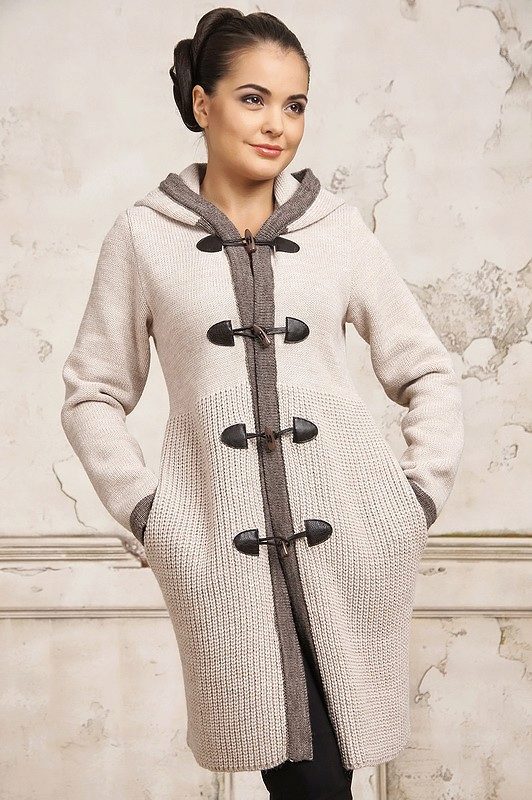
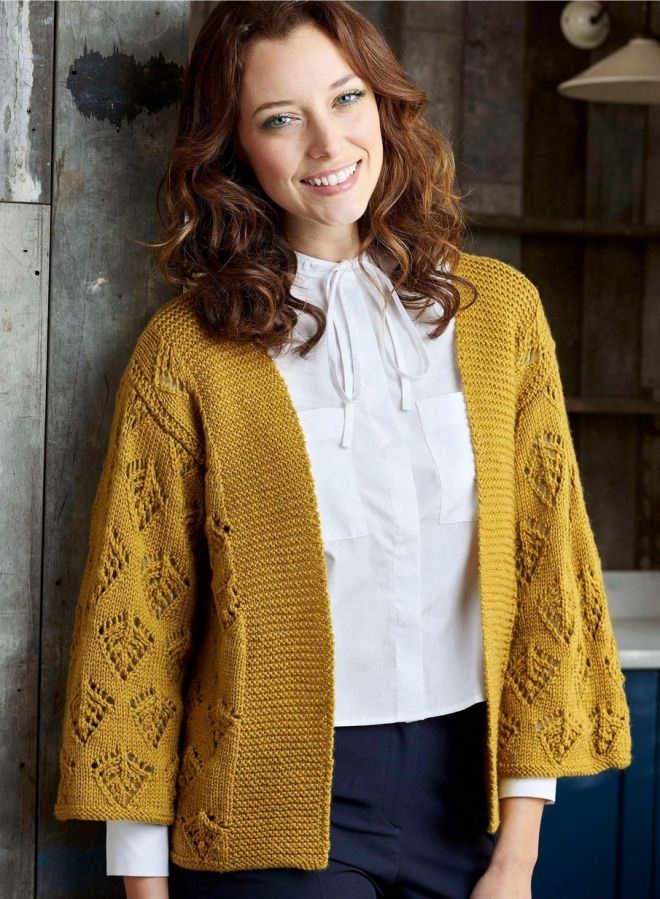
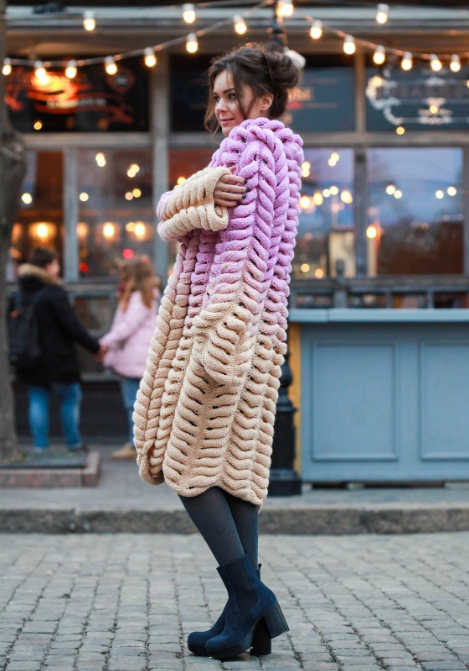
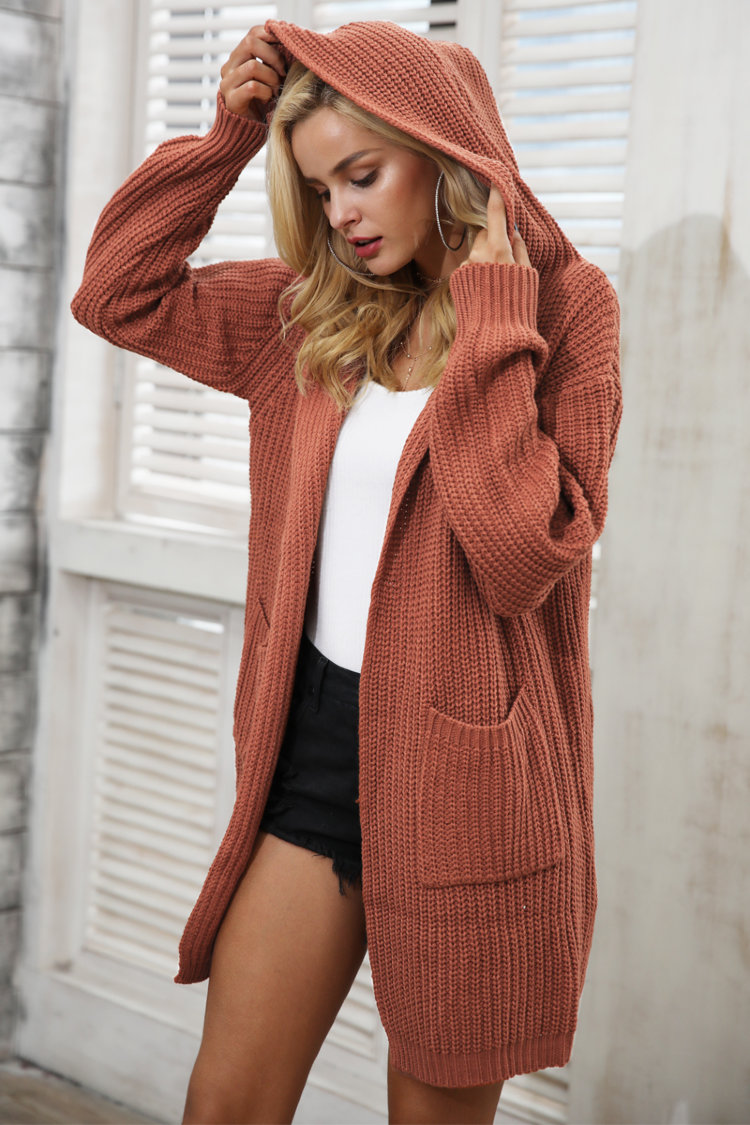

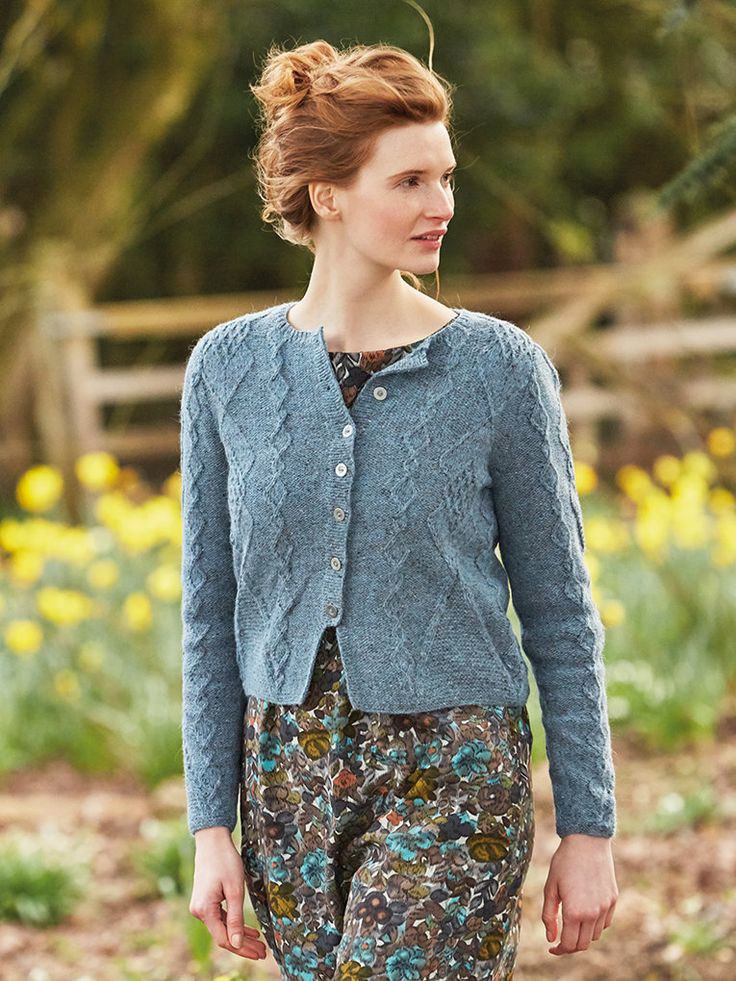
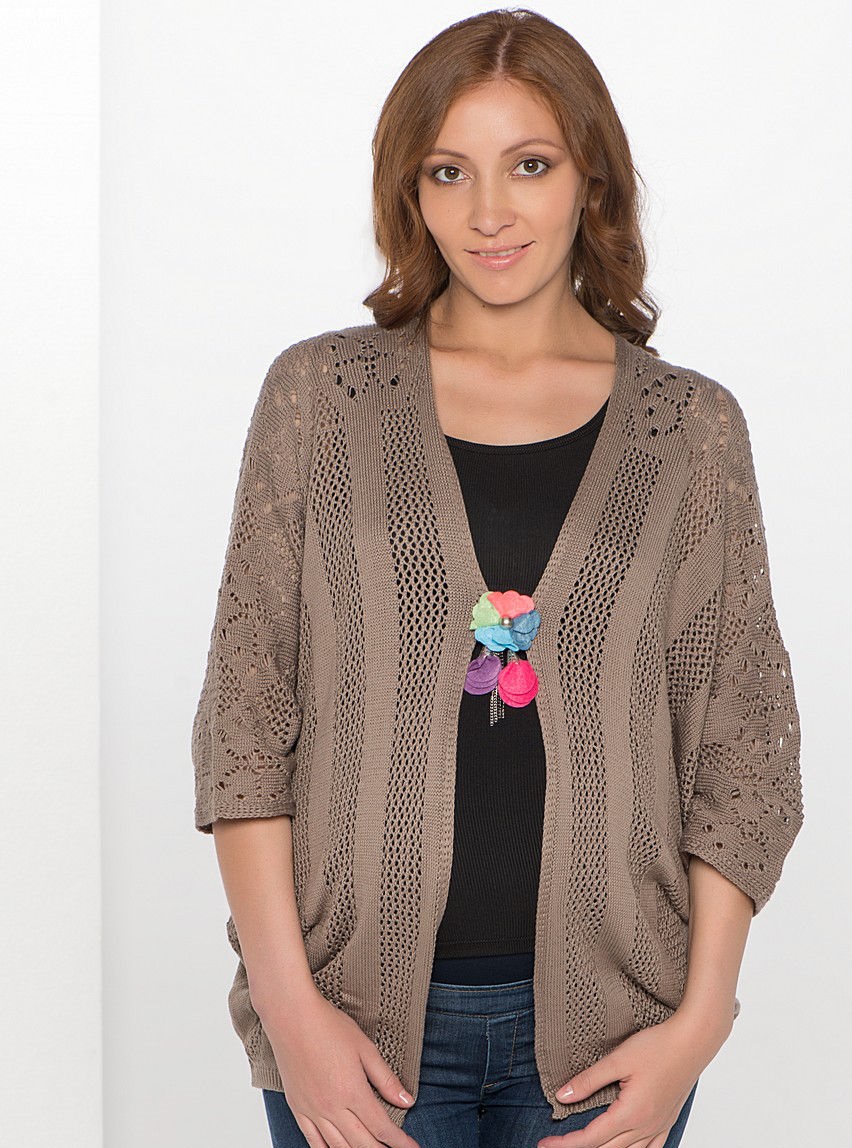


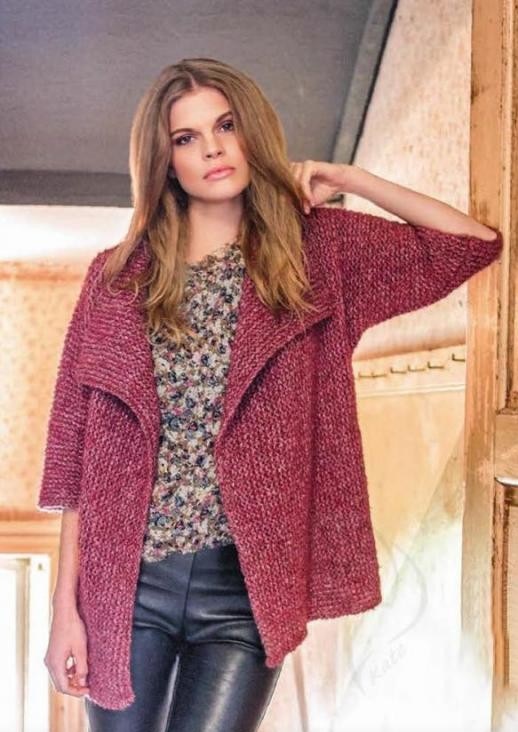

Video



